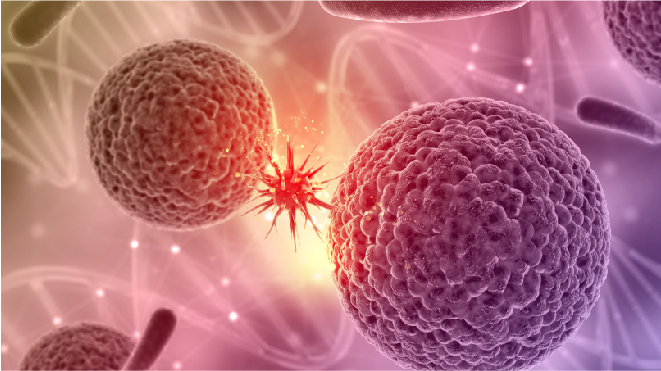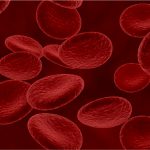Non Hodgkin’s Lymphoma or NHL is a cancer of the lymphatic system. The lymphatic system is a network of vessels, tissues and lymphatic organs. Just like the circulatory system which transports oxygen and nutrients for the body to produce energy, the lymphatic system transports the lymph fluid for the body to fight diseases and defend the body. Lymph is a fluid consisting of white blood cells, salt, proteins and lipids. The cancers of the lymphatic systems are called lymphomas. Lymphomas are divided into two major types, Hodgkin’s and Non Hodgkin’s Lymphomas.

Read more on what is blood cancer here.
NHL is more common than Hodgkin’s lymphoma and accounts to about 4.3% of the total cancer cases. The estimated cases in 2018 is about 75,000 which is about 19.4 cases per 100,000 people worldwide.
NHL is marked by the absence of a type of cell called Reed-Sternberg cells which are present in Hodgkin’s lymphomas. NHL itself is not a single disease but characterizes several different cancers and these types of cancers are more common in men than in women.
Types of Non Hodgkin’s Lymphoma:
Lymphocytes are of two types- B lymphocytes and T lymphocytes. B lymphocytes or B cells neutralize the antigens (foreign particles) by producing antibodies to counter them.T cells on the other hand are natural killers or direct killers, meaning they attack and kill the infection causing germs directly. T cells also catalyze the activity of other immune cells.
Cancers can be classified as indolent and aggressive cancers depending on the spreading and the intensity of symptoms. The types of NHLs are usually classified as T and B cell lymphomas depending on the type of lymphatic cells the cancer develops in. B cell lymphomas are more common than T cell ones. The types of NHL cancers are as follows:
- Diffuse large B-cell lymphoma (DLBCL)
- Follicular lymphoma:
- Mantle cell lymphoma
- Burkitt lymphoma
- Peripheral T cell lymphoma
- Cutaneous T cell lymphoma
The first four are B cell lymphomas. DLBCL is the most common type of NHL accounting for every one out of three cases of lymphoma. It is aggressive and spreads quickly but also responds well to treatment. Follicular lymphoma is the most common indolent or slow growing cancer and can escalate to DLBCL. NHL is more common in older people, usually around 60 years and older, but Mediastinal B-cell Lymphoma, a type of DLBCL is mostly seen in younger females.
Risk factors:
While the exact causes are not known, NHL is known to have the following risk factors:
- Presence of NHL in the family
- Prior exposure to radiation
- Existence of some autoimmune diseases
- HIV/AIDS also increases the chance of lymphoma
- High fats and meat in diet
- Being exposed to certain pesticides
- Viruses that can transform lymphocytes such as HTLV-1, EBV etc.
Symptoms:
The symptoms of NHL vary from type to type, the location of cancer and on the stage of cancer. Here are a few common symptoms of NHL:
- Swelling of lymph nodes in the neck, armpits or groin area is the most common symptom of NHL.
- Fever, weakness or fatigue are caused due to decreased immunity. Frequent infections may also be noted, night sweats and chills are also common.
- Enlargement of spleen can cause stomach pain or swelling of the abdomen. This puts pressure on the stomach that can lead to loss of appetite and weight loss.
- Sweating, difficulty breathing or chest pain, if the superior vena cava (SVC) which passes near the thymus and lymph nodes near the chest is pressed. SVC syndrome is serious and can lead to death too and has to be attended to immediately.
- Itchy skin or rashes can be noticed if the lymphoma affects the skin.
Stages:
Stages are assigned depending on the extent of NHL and the treatment and prognosis is decided after. The following are the stages outlined.
- Stage I: The cancer is confined to one lymph node or a group of nodes in close proximity, this stage accounting to 25% of the total NHL cases.
- Stage II: The cancer is limited to two node regions and surrounding group of nodes, or has affected one organ and one region of lymph nodes and 14% of the cases are noted to be in stage II.
- Stage III: The cancer has affected both the sections of the body, above and below the diaphragm, 16% of the total cases are in stage III.
- Stage IV: This is the last stage where several lymphatic organs are damaged and other parts of the body like liver, bones and lungs also start getting affected, about 34% of the total cases are in stage IV.
Diagnosis:
NHLs are usually slow growing and are mostly detected incidentally. Some of the tests that can indicate NHL in a person are:
- Lymph node biopsy is required to confirm the presence of this cancer.
- Blood tests can help determine the extent of NHL on the basis of blood counts but blood test itself cannot be used to detect it.
- Bone marrow biopsies are also used to detect the damage to the bone marrow but no discrepancies can be noted if the NHL is in early stages and has affected lymph nodes only.
- Imaging tests such as CT or PET scan help determine the stage and type of lymphoma and also if there is any secondary cancer through spreading.
Treatment:
Depending on the type, stage and age of the patient with NHL, the doctors decide the best course of action for the patient. One single type of treatment or a combination of a few may be opted. The treatment options include:
1.Chemotherapy:
Chemo is the main treatment in most cases with non-Hodgkin lymphoma. It can be used in combination with other treatment methods depending on the stage and type of NHL. In this method, anti cancer drugs are given intravenously or orally and the drugs act throughout the body. In case of risk of the cancer spreading to brain or spinal cord, the chemotherapy drugs can be injected into the spinal cord too. Chemotherapy has some side effects, damage of the bone marrow being the major one. If so, stem cell transplant might be suggested.
2.Immunotherapy:
The immune system is affected in NHL and this makes one vulnerable to other diseases too in addition to the body not being able to fight the cancer. Immunotherapy helps boost the body’s immunity or gives synthesized immunity to enable the body to fight cancer. Antibodies to fight specific cells are injected, monoclonal antibodies being one such example.
3.Radiation therapy:
Radiation is the main treatment for the earlier stages of NHL. In aggressive or more advanced cases, it is used along with chemotherapy. A focused beam of radiation is targeted on the site of cancer to kill the cancerous cells. While the side effects of radiation are short term, long term exposure to radiation can increase the risk of developing cancers again.
4.Stem cell transplantation:
Stem cell transplantation is an important technique for treating blood cancers or the cancers that metastasized to blood. In this method, the patient’s bone marrow is suppressed by the use of high doses of chemotherapy drugs and/or radiation and new bone marrow cells, called stem cells, are introduced.
The healthy cells can be from an unaffected part of the same person or can be of a different person depending on the extent of cancer in the patient. Healthy bone marrow means fresh production of healthy blood cells that increases the blood count and the production of cancerous cells is decreased. Stem cell transplantation can allow higher doses of chemotherapy which may be required in advanced cases. The side effect of stem cell transplantation is that the body’s immunity is extremely low during which increases the risk of infections and diseases.
Survival rates:
The survival rate is usually measured by the five year survival rate, which denotes the number of people out of 100 who live beyond five years after being diagnosed with the cancer. The overall five year survival rate for NHL is 71.4%. The survival rate of NHL depends on the stage of cancer too with the the rates being about 80% for stage I and 60% for stage IV, the survival rates of the other two stages being in that range.



